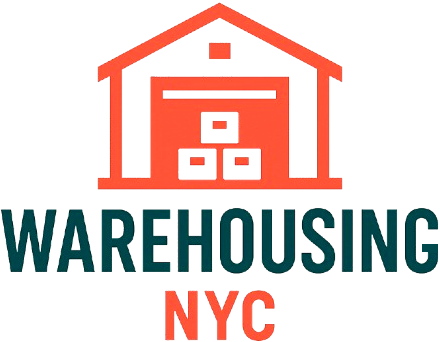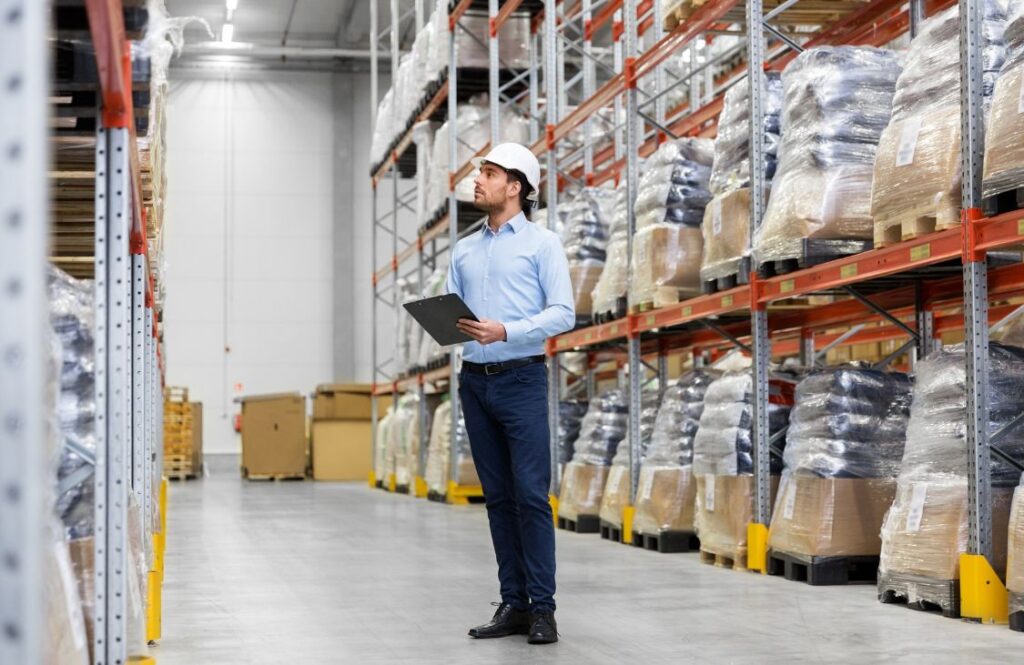Cold chain logistics is a critical component in transporting perishable goods such as pharmaceuticals, fresh produce, and temperature-sensitive medical supplies. One of the most essential aspects of this specialized supply chain is precise temperature control. Understanding how to ensure temperature control in cold chain logistics is a non-negotiable standard that directly impacts product quality, regulatory compliance, and consumer safety.
Here are actionable strategies to help logistics professionals manage a temperature-sensitive supply chain efficiently.
Table of Contents
Key Takeaways✔ Identify and follow the specific temperature ranges required for each product type to prevent spoilage and ensure compliance. ✔ Choose refrigeration systems that align with shipment distance, cargo size, and infrastructure to maintain consistent temperature control. ✔ Implement real-time monitoring with IoT sensors and GPS alerts to detect and correct temperature deviations immediately. ✔ Regularly calibrate and maintain cold chain equipment to ensure it performs reliably throughout the entire logistics process. ✔ Pre-cool trailers and containers before loading to prevent thermal shock and preserve cargo quality from the start. ✔ Standardize loading and unloading procedures using refrigerated docks, time limits, and optimized load sequencing to reduce temperature spikes. ✔ Provide cold chain staff with comprehensive training on equipment, emergency protocols, and documentation to minimize human error. ✔ Plan logistics routes with temperature control in mind, avoiding high-risk areas and building in contingencies for delays. ✔ Digitize all documentation and audit trails to ensure traceability, regulatory compliance, and streamlined reporting. ✔ Develop and rehearse contingency plans with emergency tools, backup systems, and clear protocols to handle disruptions effectively. ✔ Conduct regular internal and third-party cold chain audits to validate procedures, expose gaps, and drive continuous improvement. |
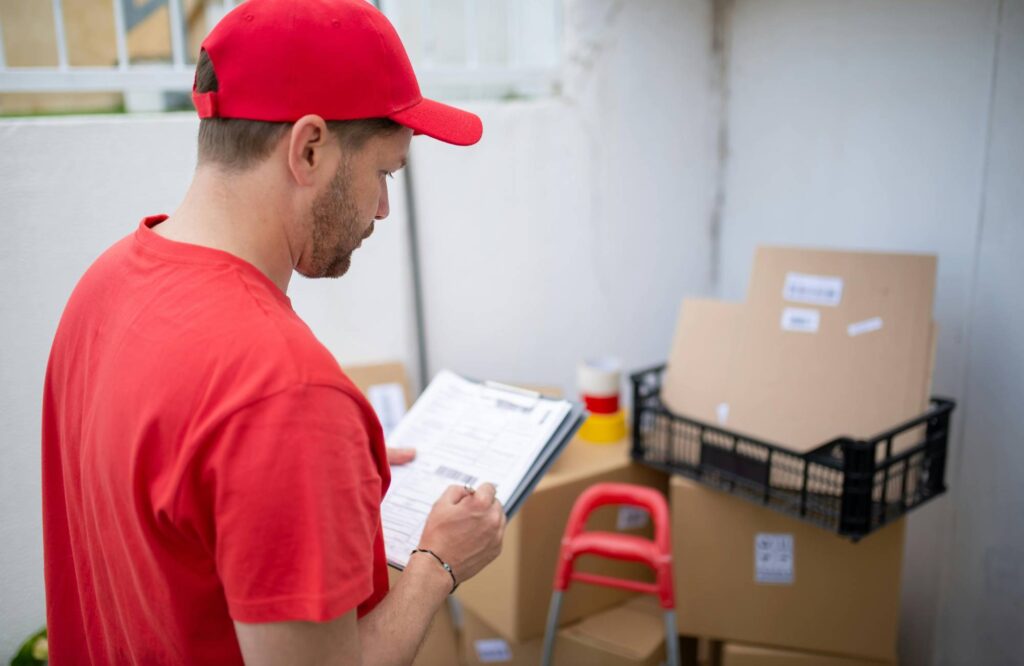
1. Understand the Specific Temperature Requirements
A foundational step in managing a temperature-sensitive supply chain is understanding the precise thermal needs of every product category. These temperature ranges are non-negotiable, and failure to comply can result in costly losses. Companies exploring how to maintain product integrity in cold chain shipping must develop tailored protocols for each category. This prevents applying a one-size-fits-all approach that jeopardizes product quality.
Common Product-Specific Temperature Ranges
- Frozen goods: Must be stored at or below -18°C to prevent microbial growth and texture degradation. In the United States, more than 57% of consumers reported increasing their frozen food purchases since the pandemic began, primarily to stock up and prepare.
- Refrigerated items: Require 2°C to 8°C for optimal freshness and shelf life, such as dairy, meat, and vaccines.
- Ambient-sensitive products: Typically need 15°C to 25°C, covering products like certain pharmaceuticals, cosmetics, or specialty chemicals.
Key Considerations
- Product Stability Testing: Some manufacturers publish temperature excursion tolerances. Understanding these helps prevent overcompensating with excessive cooling.
- Buffer Zones: Implement buffer zones in storage and transport to absorb temporary external temperature spikes.
Common Pitfalls in Global Logistics
- Mixed-load mismanagement: Shipping frozen and ambient items together without zoning often leads to partial shipment losses.
- Mislabeling or poor documentation: Not clearly indicating thermal requirements on packaging can lead to incorrect handling during customs inspections or transfers.
2. Choose the Right Refrigeration Technology
Not all refrigeration methods are created equal, and selecting the wrong one can lead to irreversible damage. The solution must align with product sensitivity, duration of transit, and environmental variability.
One of the recurring challenges in managing a global cold chain network is the uneven access to high-quality refrigeration. By standardizing equipment and training on their use, logistics providers strengthen consistency in how to ensure temperature control in cold chain logistics.
Types Of Refrigeration Technologies
- Passive cooling systems: Use insulated boxes, dry ice, or phase change materials (PCMs). Best for short-haul shipments or tightly controlled environments.
- Active cooling systems: Include mechanical refrigeration units (e.g., reefer trucks, cold storage containers). Ideal for long-distance hauls or unstable climates.
Key Decision Factors
- Transit duration: Longer shipments require sustained refrigeration, often only feasible with active cooling.
- Product volume: Bulk loads may demand high-capacity active units to maintain uniform cooling.
- Power infrastructure availability: Remote or underdeveloped areas might not support active units reliably.
3. Leverage Real-Time Temperature Monitoring Solutions
Maintaining consistent temperature throughout the supply chain requires real-time visibility. More than 20% of temperature-sensitive products are compromised as a result of poor cold chain management. Monitoring tools help companies track, alert, and act before damage is done.

Core Components of Modern Monitoring Systems
- IoT sensors: Collect continuous data on temperature, humidity, and vibration.
- Data loggers: Store and transfer data at checkpoints or on arrival for audit trails.
- GPS-integrated systems: Enable geofencing alerts if a shipment enters a high-risk or out-of-compliance zone.
Benefits To Temperature-Sensitive Supply Chain
- Instant alerts: Immediate notification of temperature deviations allows for corrective action.
- Historical reporting: Essential for quality assurance and compliance with regulators like the FDA or WHO.
- Centralized dashboards: Aggregate global cold chain performance in one place for oversight and analytics.
4. Calibrate and Maintain Equipment Regularly
Temperature control depends not only on having the right equipment but also on ensuring that the equipment functions as intended throughout its lifecycle. The failure to implement proactive maintenance is a major cause of temperature excursions and subsequent losses. This is especially damaging in a temperature-sensitive supply chain where a single breakdown can compromise an entire shipment.
Moreover, in global operations, maintenance inconsistencies are a significant contributor to the challenges in managing a global cold chain network. Investing in equipment upkeep is a direct investment in how to ensure temperature control in cold chain logistics, and by extension, in customer satisfaction, regulatory compliance, and brand reputation.
Best Practices For Maintenance And Calibration
- Scheduled calibrations: All sensors and thermometers should be calibrated to NIST or equivalent standards quarterly or biannually.
- Maintenance logs: Keep detailed logs of service, repairs, and part replacements to track performance and trends.
- Predictive diagnostics: Use software that analyzes performance data to predict and prevent breakdowns before they occur.
What To Include in a Cold Chain Maintenance Program
- Routine inspections of insulation seals, compressor function, and door integrity.
- Battery health checks for mobile refrigeration units, especially in passive systems.
- Load simulations to stress-test systems under full-capacity conditions.
5. Implement Rigorous Pre-Cooling Protocols
Pre-cooling is one of the most underrated yet vital steps in ensuring temperature compliance during transport. It involves stabilizing the internal temperature of trailers, containers, or storage spaces before introducing temperature-sensitive goods. Facilities that follow uniform pre-cooling protocols significantly improve their ability to support a reliable temperature-sensitive supply chain.
Why Pre-Cooling Matters
- Prevents thermal shock: Loading products into a container that is warmer than required can trigger spoilage, even if refrigeration begins later.
- Preserves product quality: Cold-sensitive goods such as produce, vaccines, or seafood degrade rapidly when exposed to fluctuating conditions, even for short periods.
Effective Pre-Cooling Practices
- Validating ambient and target temperatures: Use calibrated thermometers to confirm the internal chamber reaches the desired temperature before loading.
- Monitoring hold times: Keep transport units pre-chilled for a specific duration to maintain consistency across shipments.
- Using automated alerts: Equip reefer units with monitoring tools that indicate when optimal temperature has been achieved and stabilized.
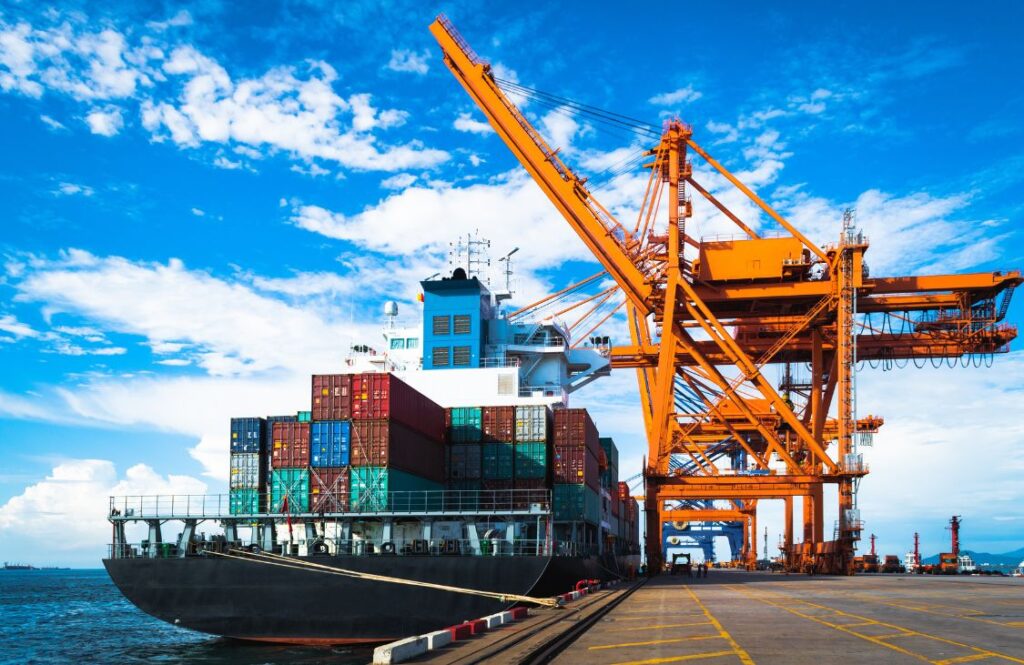
6. Standardize Loading and Unloading Procedures
When evaluating how to ensure temperature control in cold chain logistics, many companies overlook the loading zone. Yet it’s where preventable excursions are most likely to happen. To sustain a temperature-sensitive supply chain, companies must reinforce loading protocols across all hubs. Without this, global variability becomes a major vulnerability.
Risks During Handling
- Prolonged door openings: This can expose products to ambient temperatures, even in climate-controlled environments.
- Incorrect staging: Leaving products in holding areas that aren’t temperature-regulated before loading causes gradual warming.
- Improper load order: Loading in a way that restricts airflow or access to chilled air can create hot spots.
Best Practices For Standardized Loading/Unloading
- Use refrigerated loading docks: Helps maintain the cold chain during transfer points.
- Implement air curtains or vestibules: These reduce thermal exchange during door opening.
- Apply strict time windows: Limit handling time with stopwatch-based SOPs to minimize dwell periods outside refrigerated zones.
- Train handlers on rapid transfer techniques: Efficiency must be paired with awareness to reduce human-induced errors.
7. Train Personnel on Cold Chain Best Practices
Inconsistencies in training across international teams are a top contributor to the challenges in managing a global cold chain network. No system, regardless of how advanced, is immune to human error. Training is one of the most powerful tools in ensuring consistency and compliance across a complex supply chain. Understanding how to maintain product integrity in cold chain shipping starts with those on the ground—warehouse staff, drivers, dockworkers, and logistics coordinators.
Training Program Essentials
- Equipment operation: Workers must know how to correctly use, check, and troubleshoot cooling systems and monitoring tools.
- Temperature response protocols: Teach how to handle temperature deviations in real-time, including escalation steps.
- Cargo handling: Educate staff on proper staging, placement, and airflow considerations during loading.
- Regulatory documentation: Emphasize the importance of accurate data logging and record-keeping.
Enhancement Methods
- Simulation-based learning: Roleplay real-world scenarios like power outages or customs delays.
- Refresher courses: Offer quarterly or biannual training updates to reinforce knowledge.
- Certification programs: Encourage enrollment in GDP, HACCP, or ISO training for industry-recognized standards.
8. Conduct Route Planning with Temperature in Mind
Route planning directly impacts temperature control. Choosing the wrong path or failing to prepare for delays can jeopardize even the best cold chain strategy. One of the persistent challenges in managing a global cold chain network is differing regional risks, from poorly maintained roads in rural zones to unstable power grids at border crossings. Smart routing strategies mitigate these vulnerabilities and reinforce a robust temperature-sensitive supply chain.
Factors To Account For
- Climate zones: Routes passing through extreme heat or cold should trigger equipment or packaging adjustments.
- Traffic patterns: Congestion can prolong exposure time, especially in regions with inadequate infrastructure.
- Customs and border delays: International shipments may face inspection or administrative holds that stall delivery.
Optimization Techniques
- Use Transportation Management Systems (TMS): Configure software to prioritize temperature control alongside delivery deadlines.
- Incorporate contingency routing: Prepare backup plans in case of road closures, accidents, or natural disasters.
- Build temperature margins into route design: Add buffer time or redundancy in refrigeration capacity to account for unexpected holdups.
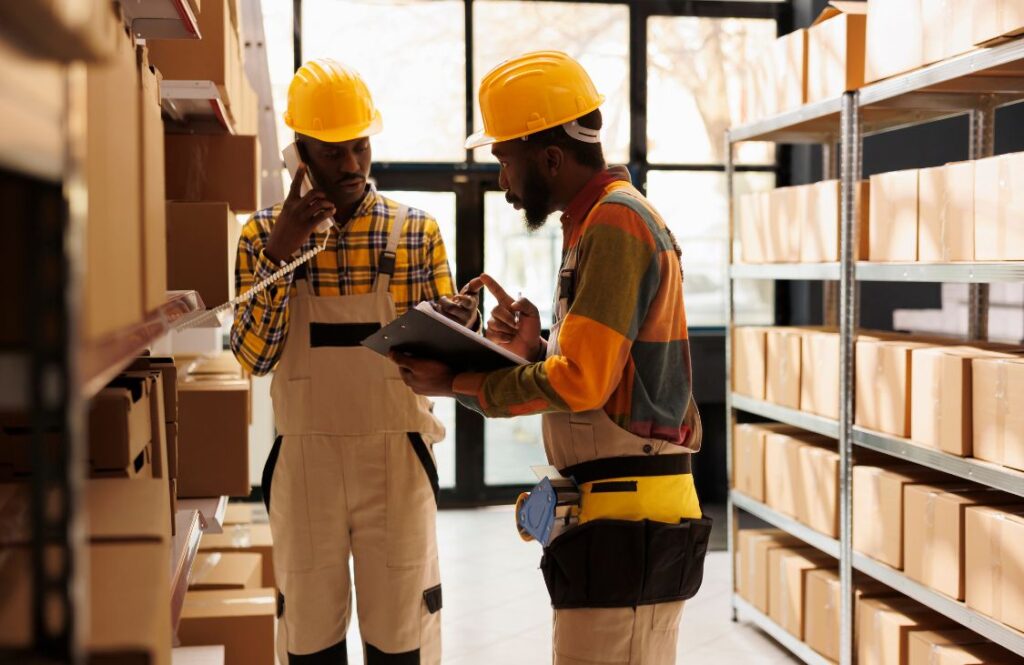
9. Maintain Proper Documentation and Audit Trails
Accurate documentation is the backbone of any compliant and transparent cold chain operation. Without proper records, it becomes nearly impossible to validate procedures or defend against regulatory scrutiny.
Why Modern Documentation Matters
- Regulatory compliance: Authorities like the FDA, EMA, and WHO require traceable records for pharmaceuticals, biologics, and food products.
- Liability protection: In the event of a temperature excursion or product recall, documentation provides a legal shield when processes are followed correctly.
Key Documentation Practices
- Automated temperature logs: Use data loggers that create digital, time-stamped records every few minutes.
- Exception alerts and corrective action logs: Record deviations and the steps taken to address them.
- Chain of custody records: Maintain a record of everyone who handled the shipment, from warehouse staff to drivers.
Advanced Technologies For Documentation
- Cloud-based storage: Allows centralized access to temperature logs from multiple geographic locations.
- Blockchain systems: Create tamper-proof audit trails for high-value or regulated goods.
- API integrations: Link temperature data to ERP or TMS platforms to ensure consistency across systems.
10. Prepare for Emergencies and Contingencies
Even the most well-designed cold chain strategy is vulnerable to disruption. Power failures, mechanical breakdowns, and transportation delays can all jeopardize cargo integrity. Companies operating a temperature-sensitive supply chain across borders must deal with varying infrastructure quality, regulatory enforcement, and environmental threats. Without contingency planning, these become critical challenges in managing a global cold chain network.
Common Threats To Temperature Control
- Power outages at warehouses, especially in remote or weather-prone regions.
- Vehicle failures, such as reefer unit breakdowns en route.
- Border delays caused by customs holdups or document verification errors.
Elements of a Robust Contingency Plan
- Backup power sources: Portable generators or vehicle-based auxiliary power units (APUs) to keep refrigeration systems running.
- Emergency response kits: Include thermal blankets, dry ice, mobile cooling containers, and spare sensors.
- Decision trees and SOPs: Clear, predefined protocols for responding to each type of emergency scenario.
Training and Readiness Tips
- Conduct mock drills: Simulate emergencies to test team preparedness and system resilience.
- Designate emergency contacts: Identify key personnel responsible for handling incidents.
- Establish fallback facilities: Maintain access to secondary storage sites or alternate carriers for high-value shipments.
11. Conduct Periodic Cold Chain Audits
Audits ensure that cold chain systems are functioning as intended and that processes are being followed correctly. They are essential for identifying weak spots and improving long-term performance. For any organization wondering how to maintain product integrity in cold chain shipping, audits are the proof point. They verify that all other strategies—monitoring, training, routing—are being executed as planned.
Types of Audits To Conduct
- Internal audits: Run by company personnel to evaluate daily operational compliance.
- External audits: Performed by third parties for unbiased evaluations and certification purposes.
- Regulatory audits: Conducted by government agencies or certifying bodies as part of inspections or licensing.
Audit Focus Areas
- SOP compliance: Ensure all standard operating procedures are up to date and followed.
- Equipment calibration: Verify that thermometers, sensors, and refrigeration units are functioning within defined tolerances.
- Data accuracy and traceability: Assess whether logs are complete, accessible, and match shipment records.
Training effectiveness: Check whether employees are knowledgeable and consistent in handling responsibilities.
Frequently Asked Questions
What are the temperature monitoring devices used in cold chains?
Temperature monitoring in cold chains typically involves data loggers, IoT sensors, and GPS-enabled trackers. These devices continuously record temperature, humidity, and location data throughout transit and storage. Advanced systems also provide real-time alerts and cloud-based reporting for enhanced visibility and control.
How to control the cold chain?
Controlling a cold chain involves maintaining strict temperature conditions through proper refrigeration, real-time monitoring, and staff training. Pre-cooling equipment, planning efficient routes, and standardizing loading/unloading procedures help reduce temperature excursions. Digital documentation and audits ensure compliance and traceability throughout the process.
What temperature should a cold chain be maintained between?
The required temperature range depends on the product being shipped. Typically, frozen goods should be kept at or below -18°C, refrigerated items between 2°C and 8°C, and ambient-sensitive products between 15°C and 25°C. Consistently maintaining these ranges is essential to preserving product quality and meeting regulatory standards.
What is temperature control in logistics?
Temperature control in logistics refers to managing the thermal conditions of goods during storage, handling, and transportation. It ensures that temperature-sensitive products like food, pharmaceuticals, and vaccines remain within safe temperature limits. Effective control helps prevent spoilage, regulatory violations, and financial loss.
What are the four R's of cold chain monitoring?
The four R’s of cold chain monitoring are Recording, Reporting, Reviewing, and Reacting. These steps ensure that temperature data is collected accurately, reported in real-time, analyzed for compliance, and acted upon when issues arise. Together, they form the foundation of a responsive and reliable cold chain system.

Secure Your Cold Chain with Warehousing NYC By Best!
Ensure your temperature-sensitive supply chain stays compliant, efficient, and protected with the experts at Warehousing NYC By Best. Whether you’re transporting pharmaceuticals, perishables, or specialty products, our team in New York, NY, is equipped with advanced cold storage technology and industry-leading logistics practices.
Don’t leave product integrity to chance—Warehousing NYC By Best offers reliable, real-time monitoring and handling solutions tailored for businesses across New York, NY.
Contact Warehousing NYC By Best today and protect every degree of your supply chain!
